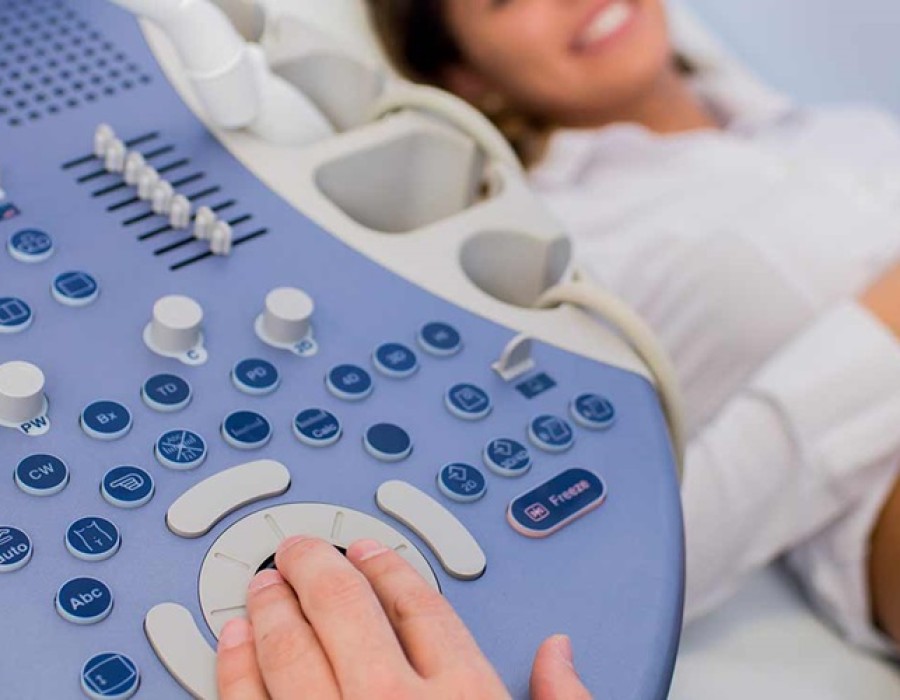An ultrasound center is a specialized medical facility that provides a range of diagnostic imaging services using ultrasound technology. These centers play a crucial role in healthcare by offering non-invasive examinations that help physicians assess and diagnose various medical conditions. Here’s an overview of the services typically offered at an ultrasound center:
- Diagnostic Ultrasound: This is the most common service provided. Diagnostic ultrasound uses high-frequency sound waves to create images of structures inside the body. It helps in evaluating organs such as the liver, kidneys, pancreas, gallbladder, uterus, ovaries, prostate, and thyroid. Ultrasound is also used to examine blood vessels and soft tissues.
- Obstetric Ultrasound: This service is focused on monitoring fetal development during pregnancy. Obstetric ultrasound is used to confirm pregnancy, determine the baby’s due date, assess fetal growth and development, detect multiple pregnancies, and evaluate the placenta and amniotic fluid.
- Gynecological Ultrasound: Specifically for women’s health, gynecological ultrasound helps in assessing conditions related to the reproductive system, including the uterus, ovaries, and fallopian tubes. It is used to diagnose conditions such as ovarian cysts, uterine fibroids, and abnormal bleeding.
- Vascular Ultrasound: This type of ultrasound examines blood flow and circulation in the body’s blood vessels. It helps in diagnosing conditions such as deep vein thrombosis (DVT), peripheral artery disease (PAD), and carotid artery disease. Vascular ultrasound is also used to evaluate varicose veins.
- Musculoskeletal Ultrasound: This service focuses on assessing muscles, tendons, ligaments, joints, and soft tissues. It is used to diagnose conditions such as tendonitis, tears in muscles or ligaments, bursitis, and joint inflammation. Musculoskeletal ultrasound is valuable for guiding injections and other therapeutic procedures.
- Cardiac Ultrasound (Echocardiography): Also known as echocardiography, cardiac ultrasound evaluates the structure and function of the heart. It helps in diagnosing conditions such as heart valve problems, congenital heart defects, cardiomyopathy, and pericardial disease.
- Interventional Ultrasound: In some centers, ultrasound is used for guided procedures such as biopsies and fluid drainage (aspiration). Interventional ultrasound combines imaging with minimally invasive techniques to obtain tissue samples or drain fluid from specific areas in the body.
- Emergency and Point-of-Care Ultrasound: Increasingly, ultrasound is used in emergency departments and urgent care settings for rapid diagnostic assessment of conditions such as trauma, abdominal pain, and other acute medical issues. This type of ultrasound is focused on immediate decision-making and patient management.
- Pediatric Ultrasound: Tailored for children, pediatric ultrasound focuses on evaluating conditions specific to pediatric patients, including developmental abnormalities and conditions affecting organs such as the kidneys, liver, and urinary tract.
- 3D/4D Ultrasound: While primarily used in obstetrics, 3D and 4D ultrasound provides three-dimensional images of the fetus, offering more detailed views and sometimes real-time video of fetal movements.
Ultrasound centers are staffed by trained sonographers and radiologists who perform and interpret the exams, working closely with referring physicians to provide accurate diagnoses and appropriate treatment plans. These services contribute significantly to modern medicine’s diagnostic capabilities, offering non-invasive, radiation-free imaging that is safe and effective for patients of all ages.





Comments